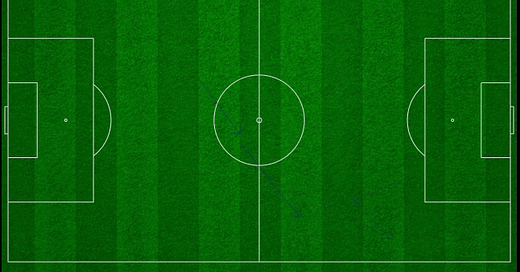No Passengers: How Arne Slot's Liverpool 'Kill them with Passes'
Liverpool's passing value has shifted since last season. They're arguably making more from less thanks to carrying no passengers.
Passes come in all shapes and sizes. Lengths, locations, pressured, directions. What is measured can vary quite a lot.
As with shots, assigning a value helps. You’re lucky if a week goes by without a pundit voicing their opinion that pass success rate means nothing and that they’d love to know more about the types of passes involved. An analyst will agree with them on the former while doubting their commitment to learning about the latter.
The data can be confusing even for those of us with an unhealthy interest in it. For years, expected assists was the term given to passes which create chances. If a player set up a shot with an xG value of 0.1, that’s how many expected assists were added to their ledger. Then FBRef blurred the lines a little.
The aforementioned metric was traditionally shortened to xA, but FBRef now use this (and the full version of the name) for a passing model, which rates the likelihood of any pass becoming an assist. They use Expected Assisted Goals (xAG) for what nerds used to call expected assists. If you’re now asleep, I can’t blame you.
If you’re still conscious you might be interested in what I’ve been thinking about lately, namely the difference between the figures for the two metrics and the importance of xA to Arne Slot’s Liverpool. ‘Kill them with passes’ was an instruction heard on the training ground in pre-season, as the Reds’ new coaches began instilling a method of play a few degrees of separation from Jürgen Klopp’s more hectic style.
It has been a fascinating evolution. Liverpool’s xA per match is down on last season, but their rate for xA per 100 passes has never been higher. They’ve increased the value of their passing while playing a little more patiently with a lower possession average.
Any method is potentially valid. The above chart doesn’t suggest the 2019/20 team were anything special when we know otherwise. However, the data gets more interesting once we compare it with the back of the pitch, look at how much is being added for xAG and the difference between the two metrics for the players.
Keep reading with a 7-day free trial
Subscribe to Andrew Beasley Football to keep reading this post and get 7 days of free access to the full post archives.




